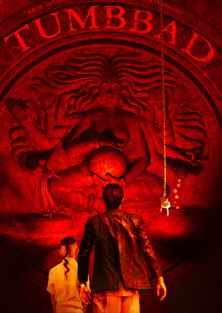Can a horror film rooted in mythology truly captivate audiences across cultures? Tumbbad, the acclaimed South Indian horror-fantasy, has not only achieved this but also set new benchmarks in the realm of cinematic storytelling. Directed by Rahi Anil Barve, the film explores themes of greed, curses, and ancient deities with an intensity rarely seen in mainstream cinema. Its re-release and the announcement of a sequel have reignited discussions about its unique narrative structure and visual style.
Set in the rural village of Tumbbad, the story unfolds within the confines of a decaying castle that guards an immeasurable ancestral fortune. The plot revolves around Vinayak, the illegitimate son of a local landlord, whose obsession with wealth leads him down a perilous path. As he delves deeper into his family's dark past, he uncovers a secret tied to Hastar, a malevolent entity born from the first creation of the universe. What starts as a calculated plan to amass riches transforms into a chilling confrontation with forces beyond human comprehension. This blend of horror and mythology is what sets Tumbbad apart from conventional films in the genre.
| Personal Information | Details |
|---|---|
| Name | Rahi Anil Barve |
| Date of Birth | Not Publicly Available |
| Place of Birth | Mumbai, India |
| Career | Film Director, Screenwriter |
| Notable Works | Tumbbad (2018), Tumbbad 2 (Upcoming) |
| Awards | National Film Award for Best Special Effects (Tumbbad) |
| Reference | IMDb Profile |
The film's success can be attributed to its meticulous attention to detail. From the haunting visuals to the intricate narrative, every element contributes to an immersive experience. The production design, particularly the depiction of the cursed village and the monstrous Hastar, draws heavily from Indian folklore. Cinematographer Dibakar Palmony captures the eerie atmosphere with striking imagery, while Sohum Shah delivers a compelling performance as Vinayak. His portrayal of a man consumed by ambition resonates with viewers long after the credits roll.
Tumbbad's re-release in theaters further solidified its status as a cult classic. It surpassed box office records previously held by other iconic films, proving that there is a growing appetite for unconventional stories in Indian cinema. Audiences appreciated the film's ability to challenge traditional notions of horror while staying true to its cultural roots. The decision to announce a sequel during the re-release screenings was met with excitement, indicating the filmmakers' confidence in expanding this mythological universe.
In addition to its domestic success, Tumbbad garnered international acclaim at prestigious film festivals such as the BFI London Film Festival. Critics praised its innovative approach to storytelling and its willingness to explore complex themes. The official trailer released for the festival showcased the film's atmospheric tension and visual grandeur, leaving viewers eager to witness the full experience. For those unfamiliar with South Asian cinema, Tumbbad serves as an excellent introduction to the region's rich storytelling traditions.
As anticipation builds for Tumbbad 2, fans are curious about how the filmmakers will expand upon the original's mythology. Will Hastar's curse return with greater ferocity? Will new characters be introduced to challenge or aid Vinayak's descendants? These questions linger in the minds of audiences who eagerly await the next installment. The sequel promises to delve deeper into the world of Hastar, potentially exploring untold chapters of this ancient tale.
Beyond Tumbbad, the influence of South Indian cinema continues to grow globally. Platforms like Netflix and Amazon Prime Video have played a significant role in bringing regional films to wider audiences. Titles such as Miss Shetty Mr. Polishetty, Aay, and Adios Amigo exemplify the diversity and creativity present in the industry. Moreover, collaborations between South Indian filmmakers and international studios highlight the increasing recognition of their talents on a global scale.
The fashion elements depicted in these films also deserve mention. From Nayanthara's vibrant vermilion saris to Sai Pallavi's elegant Kasavu drapes, costume design plays a crucial role in enhancing the visual appeal of South Indian cinema. Each outfit reflects the cultural nuances and personal styles of the characters, adding layers of authenticity to the narratives. Such attention to detail ensures that even non-native viewers can appreciate the artistry involved in crafting these films.
For cinephiles seeking more information about Tumbbad and similar films, resources abound online. Websites dedicated to South Indian movies provide comprehensive reviews, cast details, and behind-the-scenes insights. Additionally, platforms offering Tamil dubbed versions of popular films cater to multilingual audiences, further broadening the reach of these productions. Korean drama enthusiasts may find parallels between the storytelling techniques employed in both genres, underscoring universal themes that transcend linguistic barriers.
In conclusion, Tumbbad stands as a testament to the power of innovative storytelling combined with deep-rooted cultural elements. Its impact extends beyond mere entertainment, sparking conversations about representation, mythology, and the future of horror cinema. As we await Tumbbad 2, it becomes clear that this franchise holds immense potential to shape the trajectory of Indian filmmaking for years to come.




